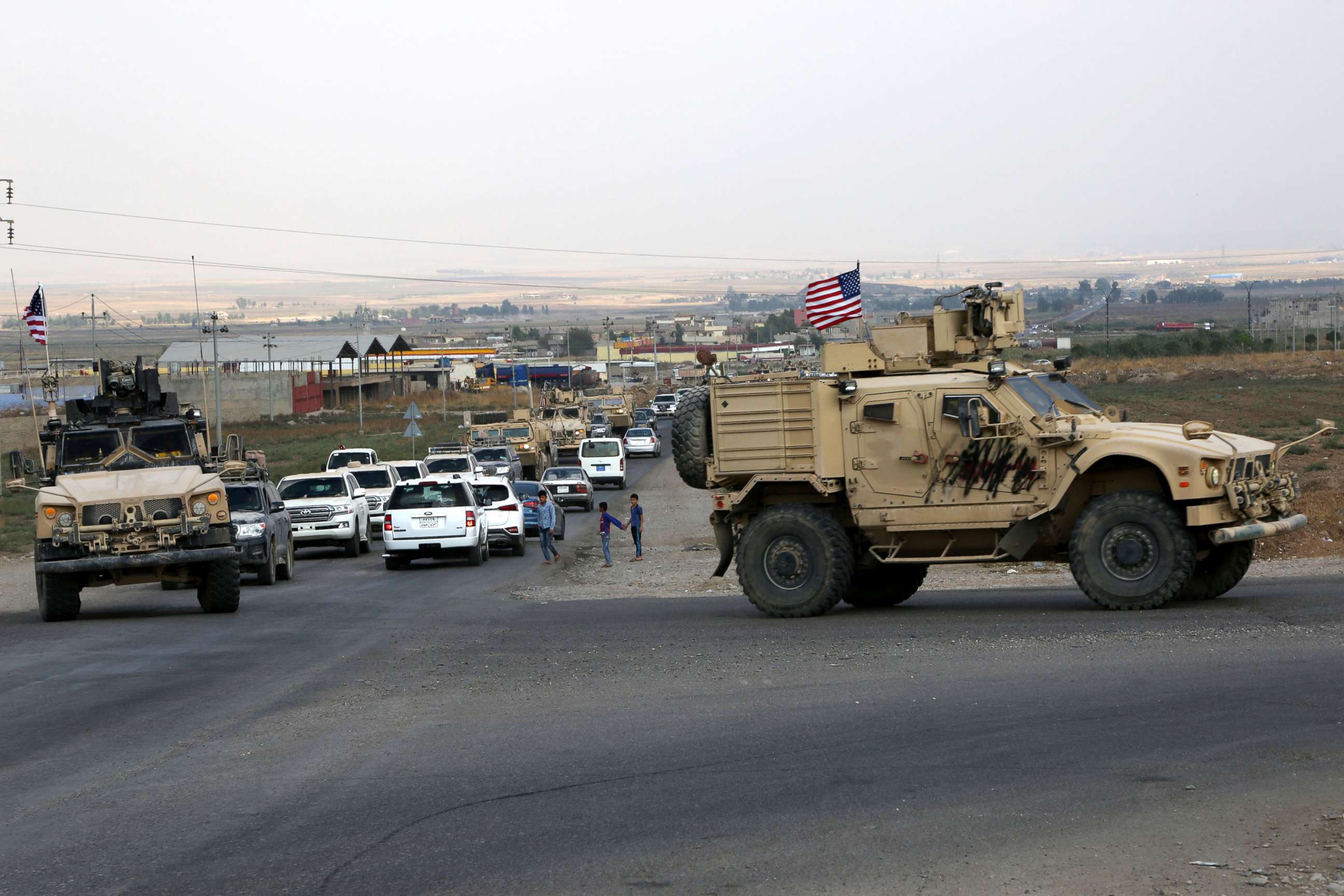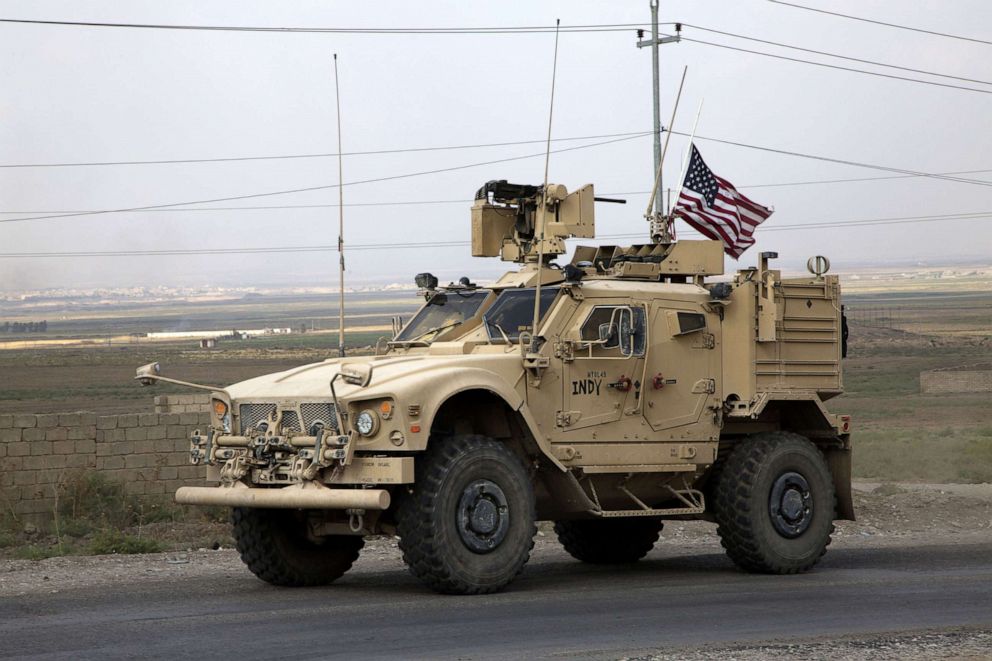Pentagon weighs keeping US troops near Syrian oil fields
It remains unclear what will happen when the 120-hour ceasefire ends on Tuesday.
There have been internal discussions about possibly keeping some U.S. troops in eastern Syria near oil fields, Defense Secretary Mark Esper told reporters in Afghanistan on Monday, but he added that no options had been presented to President Donald Trump.
Hours later, the president seemed to indicate support for the idea when he told reporters at a cabinet meeting that it would not be necessary to keep American troops in Syria, "other than that we secure the oil."
A senior U.S. official confirmed to ABC News that an idea being discussed at the Pentagon is keeping a mixture of U.S. troops and European partners close to the oil fields so that the fields do not become a target for the Syrian regime and their Russian military backers.
The New York Times was the first to report that the president was leaning towards keeping about 200 American troops in the oil fields located in eastern Syria.
On Sunday, Trump tweeted about the U.S. troops who were close to the oil fields.
"USA troops are not in combat or ceasefire zones. We have secured the Oil," he tweeted.

The U.S. is in the process of withdrawing all of its 1,000 troops from northeast Syria in a phased process, with the exception of a small force that Trump said last week would remain at At-Tanf garrison near the border with Jordan to deter the Islamic State. Trump indicated the decision to keep the troops there was prompted by a request from Israel and Jordan. U.S. officials have previously said that the presence of about 150 service members at that facility is intended to deter Iran from transporting weapons into Syria.
At a news conference in Afghanistan on Monday, Esper said that the U.S. troops near oil fields in eastern Syria were in place because the phased withdrawal is fully underway to the west, near the Kobani Landing Zone. That airstrip, about 20 miles south of the border city of Kobani, is where American forces in western Syria have consolidated from smaller outposts. They will move their equipment and personnel either by air or ground convoy in a process that Esper said would take "weeks, not days."
"We presently have troops in a couple cities that are located right near that area," said Esper. "The purpose is to deny access to -- specifically -- revenue to ISIS and other groups that may want to seek that revenue to enable their own maligned activities. There has been a discussion about possibly doing it but no decision with regard to numbers."

On Monday, video emerged on social media showing Kurdish protesters in the eastern border town of Qamishli hurling potatoes at U.S. vehicles that were escorting semi-trucks, presumably carrying equipment to Iraq.
Esper also disclosed that -- for the first time -- American military drones were being used to monitor the ceasefire between Turkey and Syrian Kurds, which he had earlier characterized as "generally holding."
"We are allocating some ISR (intelligence, surveillance and reconnaissance) assets to monitor, as best we can, specific areas of the new safety zone, if you will, to monitor to the best we can the ceasefire," Esper said.
"It's difficult to do from the air, you're often impeded by weather you don't get the precision of visibility that you need," he added. "We're trying to support that the best we can with the resources we have."
It remains unclear what will happen when the 120-hour ceasefire negotiated by the U.S. ends on Tuesday.




